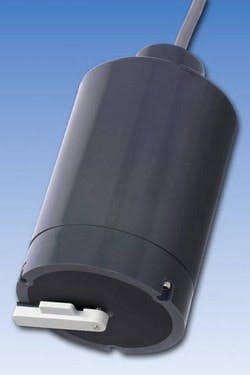Endress+Hauser has released the Turbimax CUS71D ultrasonic immersion sensor for interface measurements in processes where suspensions are separated into their liquid and solid components by sedimentation. It can monitor the separation and transition zones of the clarification and settling phases continuously.
The sensor uses a piezoelectric crystal to generate an ultrasonic signal and measures the time required for the signal to reach solid particles in the separation zone and then return to the receiver. The sensor is used with Endress+Hauser’s Liquiline M CM44x series of transmitters to form a complete measurement system.
The speed of sound varies according to the physical properties of the measuring medium and is affected by temperature and air pressure. The composition of the liquids and solids can also vary. Endress+Hauser’s M CM44x multi-parameter/multiple sensor transmitters are able to compensate and adjust for these changing process conditions, ensuring accurate measurement.
The transmitters can mask out regions where the separation zone is not expected, evaluate received signal strengths, select leading or trailing signal edges in the evaluation and define a region above and below the expected separation zone to serve as a “gate”—that is, signal evaluation takes place only in the defined region. The gate can “wander” with the separation zone as required for accurate measurement. The CM44x can also amplify sensor signals at different rates to account for process conditions such as floating sludge.




